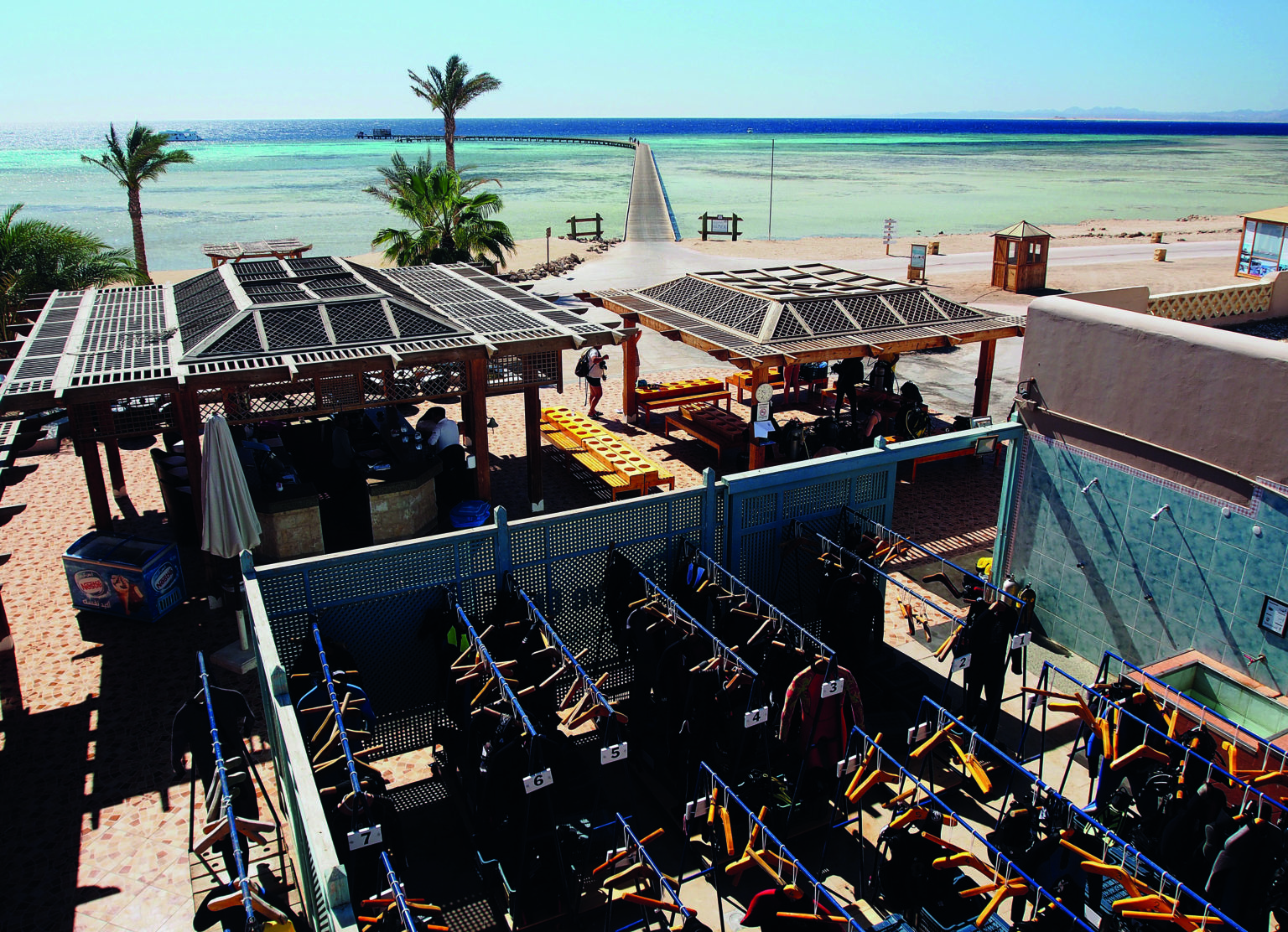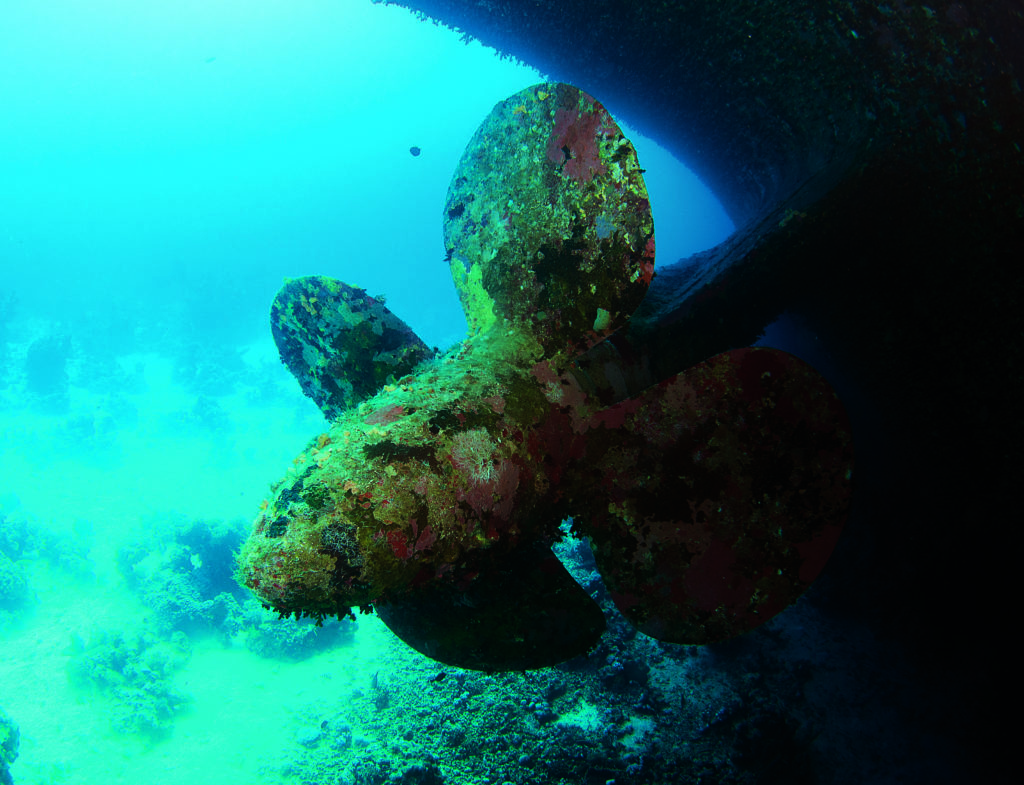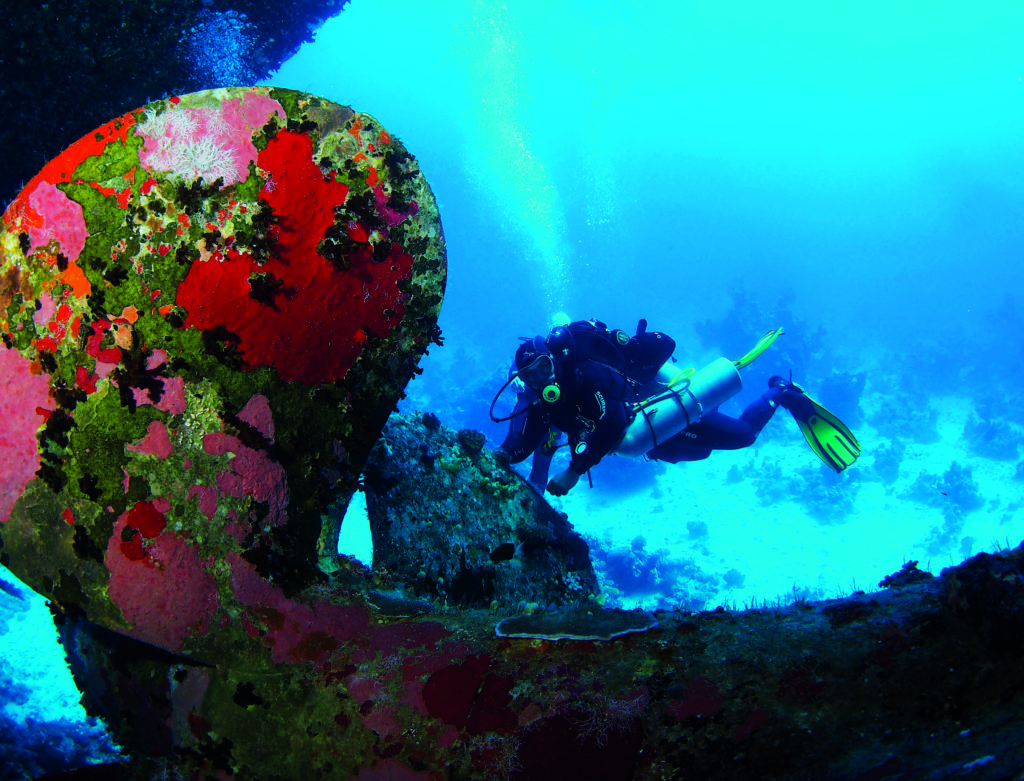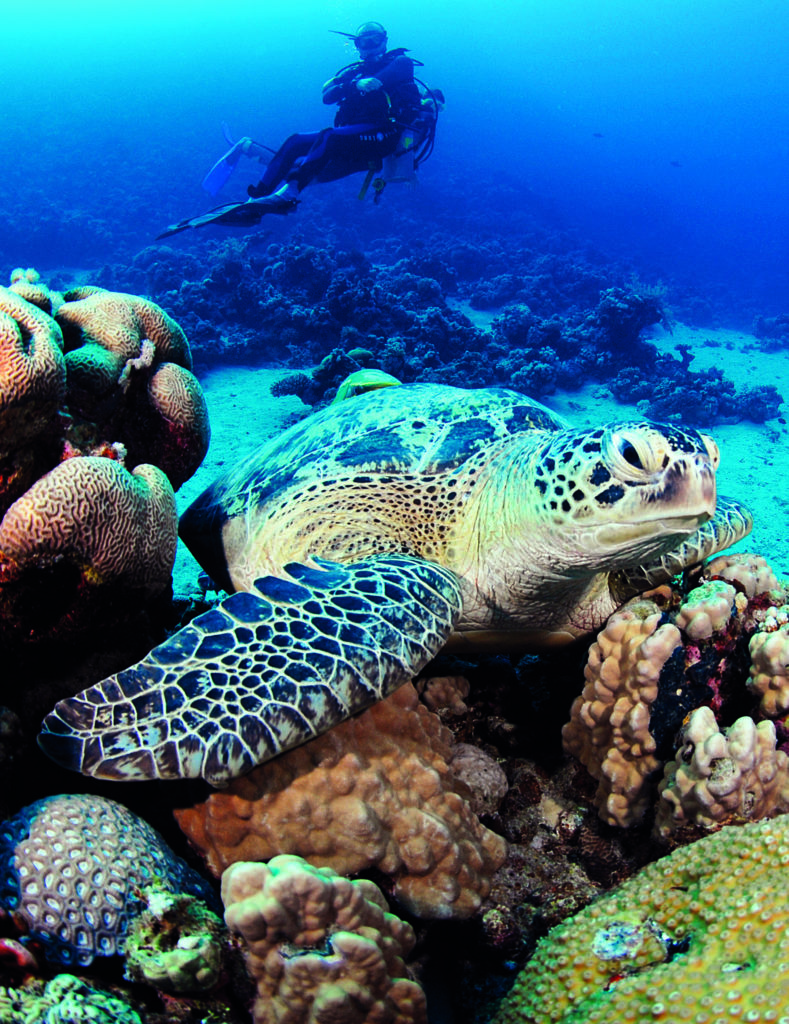Lawson Wood returns to the Egyptian Red Sea and samples life in Soma Bay, one of several new resorts which has become established in recent years.
Some 45 years after I first visited the Red Sea, my love for that region has never diminished. That first frisson of excitement came at 20,000ft when we were starting to descend and flew over the Red Sea mountains of Upper Egypt and could see the shores of the Red Sea beckoning. The route of the Thomas Cook airbus to Hurghada took us directly over Ras Abu Soma, which was to be the destination of our dive resort.
Our host for the week was Breakers at Soma Bay, the only dedicated diving and kite-surfing resort in the Middle East. The diving part of the resort is owned and operated by Orca Dive Clubs, which has the latest equipment, multi-lingual staff and a great house reef opposite the dive centre, Over 100km north of Marsa Alam, a number of the sites between Sharm and Marsa Alam were really only accessible by liveaboard dive boats in the past, but now Panorama Reef, the wreck of the Salem Express and a number of other sites around Safaga and the Soma Bay headland are easily reached.
Once the dive shop paperwork was completed, there is a week’s chart on the wall with full or half-day dive boats, RIB dives and space to plan your shore diving off the house reef. Just put your name down for whatever boat trip that you want and always make sure to remove your name if you change your mind.
The House Reef is reached along a 420-metre pier with two platforms and plenty of ladders to aid entry and exit – transport is provided by converted electric golf carts to transport you, your buddy and all the dive gear and camera equipment. This style of diving, of course, allows you and your buddy to spend extended time in the water.
The following is just a small example of the superb diving to be found along this stretch of coastline, far from the madding crowd.
The House Reef
By far, this is probably the most-dived and there are countless ‘ferry’ trips up and down the pier every day with divers and their gear, notably those early morning dives and early evening dives when the juxtaposition of daytime critters and night time denizens share the reef.
Cleaning stations are doing a roaring trade and both predators and prey line up to be cleaned of parasites with no thought of ‘breaking the rules’. Dolphins come into the pier area too and are seen regularly. This is a steeply sloping reef predominated by small hard corals that drops to around 18m before dropping steeply and even vertically in many places.
The more-vertical sections have large black coral trees which hide small schools of glassfish and hatchetfish. Curiously, there are many large bigeye snapper out in the open when they are usually well secreted away under overhangs. There are a few huge stonefish on this reef, one hiding under the sand, but the other is so well overgrown with algae it is virtually invisible amid the corals and algae beds.
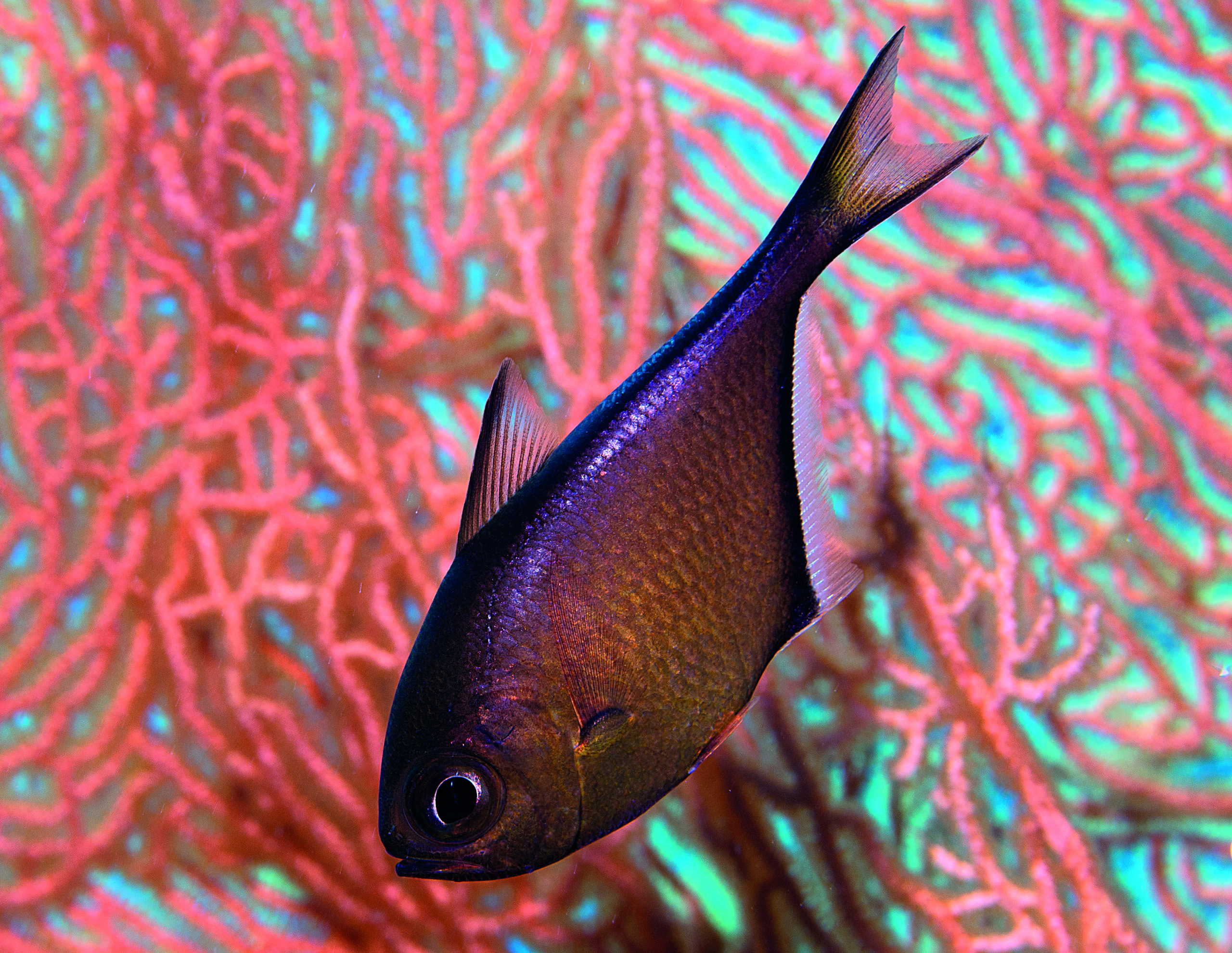
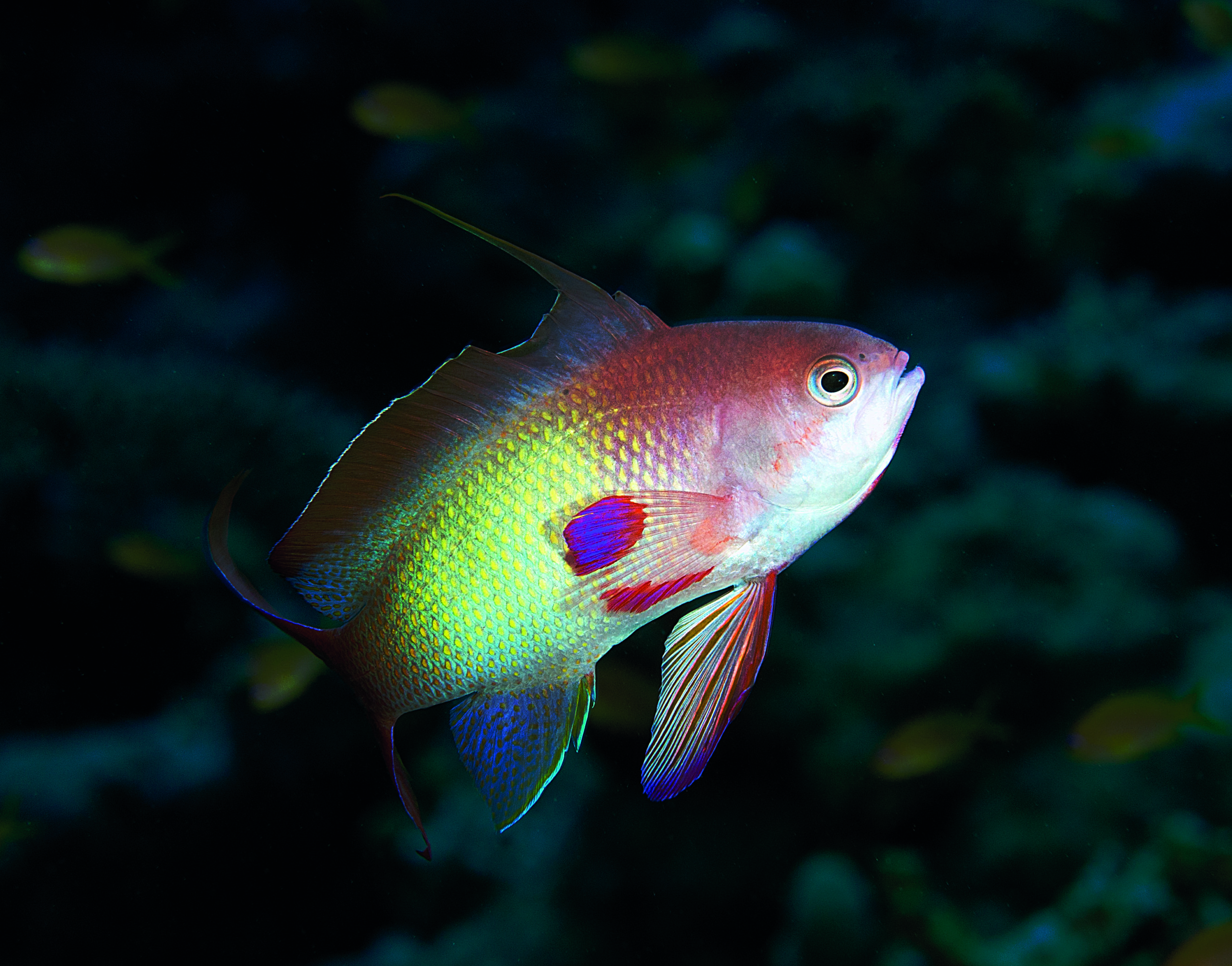
Once you get to the 30m range you will find the lyretail angelfish (Genicanthus caudovittatus), where both male and female have completely different colours.
Panorama Reef
I first dived Panorama Reef back in 1985 when working on the Lady Jenny V, principally to seek shelter one night, and found that this large circular reef with its two shallow platforms was so good that we stayed the next day too and explored all around the reef as the sun moved around and illuminated the soft coral gardens and gorgonian forests.
We set off from the Soma Bay Marina on a full-day excursion and my buddy Waleed and I dived the wall and east platform in the morning. This reef so reminds me of Jackson Reef up in the Straits of Tiran with its soft corals, teeming orange anthias and staggering amounts of angelfish and butterflyfish. This is the sheltered side of the reef away from the current, so there are much fewer sea fans. The second dive in the afternoon was a drift dive on the western plateau.
I forgot how strong the current was! Skimming over and round the huge stands of gorgonian seafans that stretch out into the current was fun, but difficult to stop and photograph. As we approached the bottom corner, the current virtually stopped and there were huge numbers of glassfish, lionfish, crocodilefish and all the usual suspects that you would find on a Red Sea reef. Panorama Reef also has a large ‘Anemone Garden’ with dozens of large anemones, huge numbers of clownfish as well as hundreds of threespot dascillus (Dascillus trimaculatus).
Gabir Soraya
Only 30 minutes from the marina, this shallow reef comprises of a large elongated reef with several small satellite coral ergs to the south. At only 15m maximum depth, the central sandy plain has a small group of garden eels, the narrow passages between the coral heads have small red seafans, plenty of fire coral as usual, but the schools of butterflyfish and angelfish were a surprise, as these fish are normally only found singularly or in pairs.
Sha’b Shear
This rather blind reef is also just a short boat ride from the marina and the dive boat anchors in a coral amphitheatre with large coral outcrops all of the way around, interspaced with narrow canyons filled with anthias and chromis. There are numerous bits of wreckage around these reefs, including a small unknown ferry in this location that is well broken up. This part of Soma Bay is littered with small coral heads, which stretch in a huge arc to the north and south.
Tobia Soraya
Around a 30-minute boat trip from the marina, this reef is really a group of small coral heads that are randomly spaced out on a 15m sand seabed. After a lengthy swim around the outside of the reef, our guide Waleed brought us to a coral head that was simply covered in gorgonian seafans and filled with longnose hawkfish (Oxycirrhites typus), glassy sweepers, hatchetfish and hundreds of cardinalfish.
Salem Express
Built in the French shipyards of La Seyne-sur-Mer in 1964, this Ro-Ro ferry was on her way back from Jeddah to Safaga overloaded with passengers who had been on a pilgrimage to Mecca on 17 December 1991. A massive storm had blown up and at gale force, the ship struck Hyndman Reef, where she was holed and quickly sank in the early hours of the morning. Official records state that 470 persons lost their lives, but locally it is widely known that many more were lost as the ship was grossly overcrowded. Now lying on her starboard side in 30m of water, she is completely encrusted in small hard corals.
When I first dived her 25 years ago, there were two of her lifeboats on the seabed, but apparently one has been lifted and there is now only one to be seen. Her stern door is now lying on the seabed, creating a huge square opening into the vehicle deck. Both her propellers are intact and make for a superb photographic backdrop as they are covered in small corals and brilliant red encrusting sponge.
The ship’s funnels have a large ‘S’ on them, but this is getting harder to see due to the corals encrusting the emblem. The ship’s bridge is fairly open and all of the windows are now gone, but her parts are still visible inside.
Her empty davits and railings all hang out into open water and the seabed is littered with debris, including some childrens’ toys, just another reminder of that terrible tragedy. There is still a large amount of controversy about whether divers should be permitted to dive the wreck and the Egyptian Government are still considering whether to ban all diving on her, but after such an extended period of time, it hardly seems worth their effort, rather, divers should be given the option whether to dive the ship or not, out of respect for the dead, religious beliefs or just not wanting to be there.
Whatever the outcome in the future, diving this wreck should be done with the greatest respect and for divers not to touch anything or disturb any of the remains.
Conclusion
Having run safaris, lived, worked and visited innumerable times, visiting the Red Sea always has a sense of nostalgia for me, and indeed I often think of it as ‘coming home’. Coincidentally, the strap line for the Breakers Diving and Surfing Resort is also ‘Welcome Home’. These Safaga reefs should not be overlooked when considering or planning a Red Sea diving trip.
NB: Lawson and Lesley Wood were supported by the Egyptian Tourism Authority; Dan Lion of Holiday Designers; Anna Hollingworth and Harriet Shearer of the Communications Group; Marwa Kachmar from Soma Bay; Wolfgang Jocham and Waleed Abd Elmaksoud from Orca Diving; and Stephan Reichl from Breakers Diving and Kite Surfing Resort. Flights were supplied by Thomas Cook.
As we approached the bottom corner, the current virtually stopped and there were huge numbers of glassfish, lionfish, crocodilefish and all the usual suspects that you would find on a Red Sea reef
Having run safaris, lived, worked and visited innumerable times, visiting the Red Sea always has a sense of nostalgia for me, and indeed I often think of it as ‘coming home
Soma Bay: - Located about 45 minutes’ drive south from Hurghada Airport, Soma Bay is the name of the entire headland resort area and there are currently five major hotels and plans for more. These are Breakers Dive and Surf Resort, Robinson’s Club (German owned and operated and a bit like a family ‘Club Med’), Sheraton, Westin and the Kempinski. Each resort has an entirely different look, layout and feel, but our host for the week was the superb Breakers, the dedicated diving and kite-surfing resort. NB: You should note that the Westin has one of the largest spas in the world: Cascades has an amazing salt water hydrotherapy pool, like something out of an ancient Byzantine palace. We also enjoyed climbing the Mediterranean steps to the top of the Rock to take in the breathtaking views over to Africa.
Photographs by Lawson Wood
